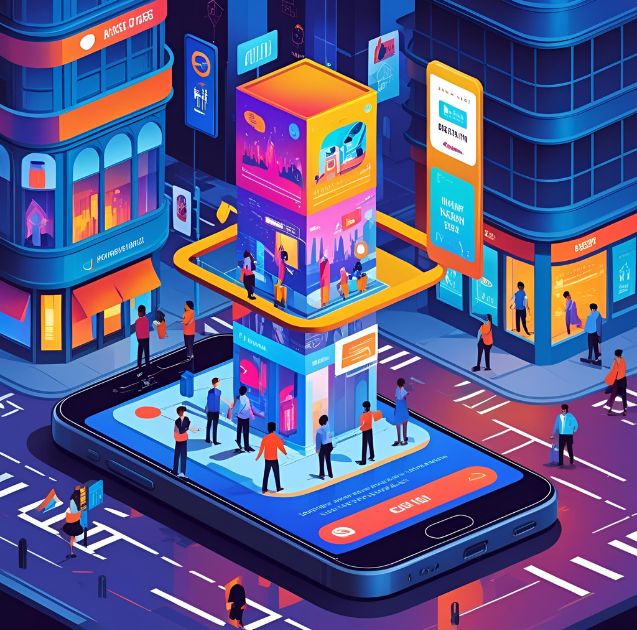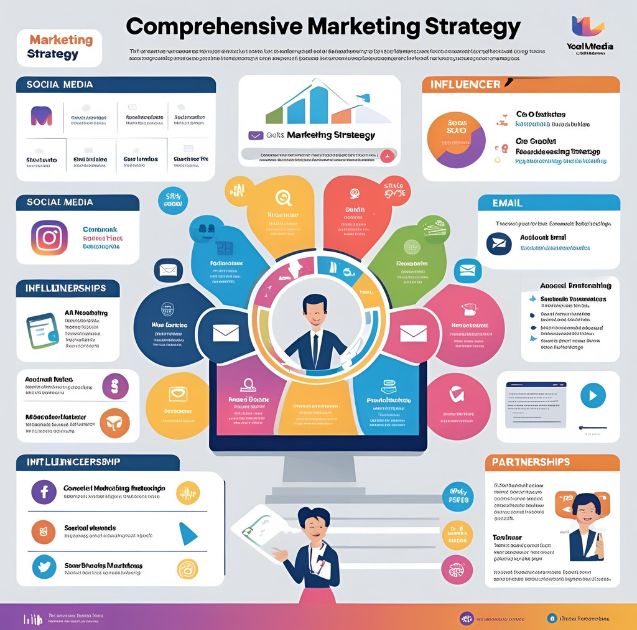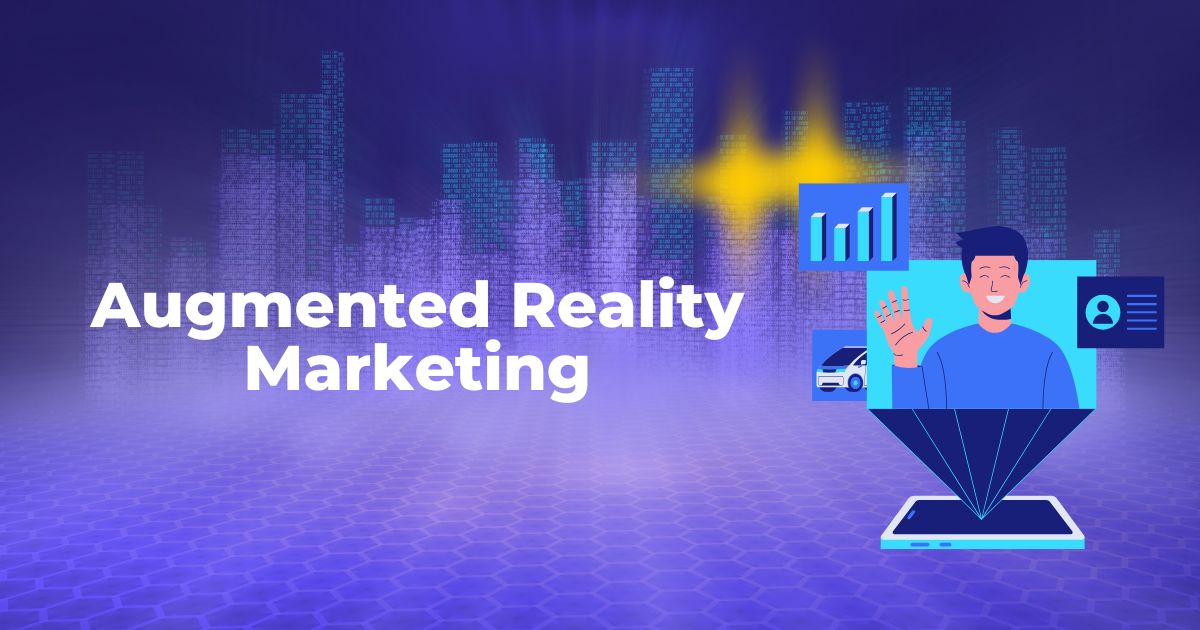When was the last time a brand made you stop in your tracks? Maybe it was a “try before you buy” feature on your phone or an interactive ad that made you feel like part of the story. Welcome to the world of augmented reality (AR) marketing.
AR takes traditional marketing to new heights by blending the physical and virtual worlds, giving customers a more immersive and interactive experience. For marketers, it provides a whole new level of engagement that’s tough to achieve through traditional methods.
If you’re curious about how AR can transform your marketing strategy, you’re in the right place. We’ll explore what AR marketing is, its benefits, real-world examples of brands nailing it, and how you can implement it to elevate your campaigns.
What Is Augmented Reality (AR) Marketing?

Augmented reality marketing uses AR technology to enhance the way customers experience your brand, products, or services. Unlike virtual reality (VR), which immerses users in a completely digital environment, AR overlays digital elements onto the real world.
Think virtual makeup try-ons, interactive 3D packaging, or games that bring your marketing message to life. AR doesn’t just grab attention; it offers an experience that customers won’t forget.
Why Should You Consider AR in Marketing?
AR isn’t just a flashy gimmick; it’s becoming a powerful tool for businesses. Here’s why integrating AR into your marketing strategy is worth considering:
1. Boosts Customer Engagement
Interactive experiences like AR keep customers engaged longer, helping your brand stand out in a crowded marketplace. When a customer can interact with your product virtually, they feel more connected to it.
2. Enhances Buying Confidence
AR solutions like virtual fittings or product visualizations can help reduce purchase anxiety, as customers can “try before they buy.”
3. Improves Brand Recall
Studies show that immersive technologies like AR have a higher impact on memory. When your marketing campaign makes a memorable impression, it’s more likely to convert.
4. Drives Sales and ROI
Enhanced customer confidence and a standout brand experience lead to increased conversions. According to Deloitte, AR-driven interactions can increase transaction and conversion rates by up to 40%.
5. Great for Social Media Marketing
AR filters and interactive ads are wildly popular on platforms like Instagram and Snapchat, making it easier to reach younger, tech-savvy audiences.
Real-World Examples of AR Marketing
Want to see AR in action? Here are some innovative ways brands have used AR to wow their audiences:
1. IKEA Place
IKEA’s AR app, “IKEA Place,” gives customers the power to visualize furniture in their homes before purchasing. Using the app, you can place a digital version of IKEA furniture in your room through your phone, ensuring it fits physically and stylistically.
Why it Works
It solves one of the biggest barriers in furniture shopping—in-store limitations. Customers leave with confidence, knowing their new couch will look perfect at home.
2. Sephora’s Virtual Artist
Sephora’s Virtual Artist app uses AR to allow users to try on different shades of makeup in real-time. From lipsticks to eyeshadows, customers can experiment with various looks without stepping into a store.
Why it Works
It creates a fun, interactive shopping experience while solving a practical problem. Makeup shoppers no longer have to second-guess whether a shade will match their skin tone.
3. Pepsi Max’s AR Bus Stop
Pepsi Max wowed London commuters by turning a bus stop into an AR experience. Through a transparent display, people saw “impossible” scenarios like alien invasions or giant robots walking down the street.
Why it Works
This campaign was not only entertaining but also highly shareable, amplifying its reach far beyond those present at the bus stop.
4. Nike Virtual Try-On
Nike implemented AR in its app to allow customers to virtually try on sneakers. Customers can see how a pair of shoes will look on their feet simply by pointing their camera at them.
Why it Works
This AR feature speeds up purchasing while enhancing customer satisfaction. Customers can find their perfect style and fit instantly.
5. Burger King’s “Burn That Ad” Campaign
Burger King used AR to create interactive advertisements where users could “burn” competitors’ ads through their phone screens. After “burning” an ad, users received coupon codes for free Burger King burgers.
Why it Works
It’s cheeky, engaging, and puts the user in control, creating a memorable brand interaction.
How Can You Implement AR in Your Marketing Strategy?

If you’re ready to incorporate AR into your marketing, here’s how to get started:
1. Define Your Goals
What do you want to achieve with AR? Is it to increase customer engagement, reduce returns, or boost sales?
2. Understand Your Audience
Not all audiences engage with AR the same way. Younger, tech-savvy audiences may love social media filters, while professional buyers may prefer AR product demos.
3. Choose the Right Platform
Decide whether you want to create:
- AR apps (like IKEA Place),
- Social media filters (Facebook or Snapchat),
- Location-based AR (like Pepsi’s bus stop).
4. Focus on User Experience
If your AR experience is cumbersome or confusing, it’ll turn users away. Keep it intuitive and seamless.
5. Collaborate with Experts
Unless you have an in-house AR team, partner with experts or agencies specialized in creating AR experiences. They’ll help ensure your project is polished and impactful.
6. Measure Performance
Track engagement rates, usage time, conversion rates, and customer feedback to measure how successful your AR campaign is.
What’s Next for AR Marketing?
AR marketing is no longer just a futuristic concept; it’s here, and it’s thriving. Businesses that integrate AR into their marketing strategies are not only stepping up their game but also reaping tangible rewards in engagement, brand loyalty, and sales.
The rate of AR adoption is accelerating, with newer tech tools making it easier and more cost-effective for businesses to experiment with this game-changing technology. Don’t get left behind.
Explore more AR marketing insights and tools on armarketingtips.com and discover how AR can revolutionize your marketing strategies.





